(!) Since support from Microsoft will end on January 14 2020, Windows 7 user might not be able to use MISUMI website effectively. Please consider to update your system as ‘MISUMI Website system requirement’.
- แจ้งวันหยุดทำการในเดือน มิถุนายน 2567 | Notice holiday in June 2024 > คลิก
Locating Pins(Insertion Guide Tolerance:h9)
Configure
Specification/Dimensions
-
Environmentally friendly
-
Characteristics/Applications
-
Insertion Guide Tip Shape
-
 Round
Round -
 Diamond
Diamond -
 Triangle
Triangle
-
-
Insertion Guide Tip Type
-
 Tapered
Tapered -
 Round Tapered
Round Tapered -
 Taper R
Taper R -
 R
R -
 Spherical
Spherical -
 Flat
Flat -
 Ball End
Ball End -
 Bullet Nose
Bullet Nose
-
-
Insertion Guide Specifications
-
 Not Provided
Not Provided -
 With Screw Mount Hole
With Screw Mount Hole -
 With Hex Socket
With Hex Socket -
 With Flathead Slot
With Flathead Slot -
 Tapped
Tapped
-
-
Mounting Side Shape
-
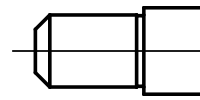 Straight (Press-Fit)
Straight (Press-Fit) -
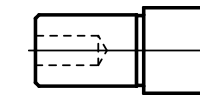 Tapped
Tapped -
 Threaded
Threaded -
 Circumference Groove
Circumference Groove -
 Notch
Notch -
 Set Screw Flat
Set Screw Flat
-
-
Surface Treatment
- Not Provided
- Black Oxide
- Electroless Nickel Plating
- Hard Chrome Plating
- Buffed
- Hard Chrome Plating + Buffed
- Anodize
- Polishing
- Isonite Treatment
-
Heat Treatment
- Not Provided
- Carburized
- Directly Quenching
-
Material
- Steel
- Stainless Steel
- Resin
- Aluminum
-
Insertion Guide Outer Dia. D1(mm)
-
Insertion Guide Tolerance
-
Mounting Side Outer Dia. d(Ø)
-
Mounting Side Tolerance
-
Cleaning Method
- Degreasing
- Precision Cleaning
- Electrolytic Polishing + Precision Cleaning
|
Basic Shape
|
|
|---|---|
Brand |
|
| CAD |
|
| Days to Ship |
|
- 2 items
- Sort By
-
You can add up to 6 items per a category to the compare list.
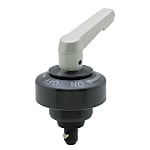

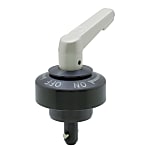
Single-Action Flex Locator (Taper Pin, Straight Pin) (CP722)
IMAO CORPORATION
[Applications]
· Plate positioning.
[Features]
· The repeated positioning accuracy is ±10 microns.From: ฿ 5,210.87 Days to Ship: 7 Day(s)
7 Day(s)
-
You can add up to 6 items per a category to the compare list.

Seating Pins Partially DIN 6321 (Old Norm)
HALDER
[Applications]
· Can also be used for feet and stoppers, etc., in addition to supports and pedestals.From: ฿ 522.00 Days to Ship: 15 Day(s)
15 Day(s)
| Brand |
|---|
| Product Series |
| CAD |
| From |
| Days to Ship |
| Basic Shape |
| Environmentally friendly |
| Characteristics/Applications |
| Insertion Guide Tip Shape |
| Insertion Guide Tip Type |
| Insertion Guide Specifications |
| Mounting Side Shape |
| Surface Treatment |
| Heat Treatment |
| Material |
| Insertion Guide Outer Dia. D1(mm) |
| Insertion Guide Tolerance |
| Mounting Side Outer Dia. d(Ø) |
| Mounting Side Tolerance |
| Cleaning Method |
You can add up to 6 items per a category to the compare list. | You can add up to 6 items per a category to the compare list. | |
| Brand | IMAO CORPORATION | HALDER |
| Product Series | Single-Action Flex Locator (Taper Pin, Straight Pin) (CP722) | |
| CAD |
|
|
| From | ฿ 5,210.87 | ฿ 522.00 |
| Days to Ship | 7 Day(s) | 15 Day(s) |
| Basic Shape | Small Head | Large Head |
| Environmentally friendly | - | - |
| Characteristics/Applications | - | - |
| Insertion Guide Tip Shape | Round | Round |
| Insertion Guide Tip Type | Tapered / Flat | Tapered |
| Insertion Guide Specifications | Not Provided | Not Provided |
| Mounting Side Shape | Straight (Press-Fit) | Straight (Press-Fit) |
| Surface Treatment | Isonite Treatment | Polishing |
| Heat Treatment | - | Directly Quenching |
| Material | Steel | Steel |
| Insertion Guide Outer Dia. D1(mm) | 8 | 10 |
| Insertion Guide Tolerance | h9 | h9 |
| Mounting Side Outer Dia. d(Ø) | 25 | 6 |
| Mounting Side Tolerance | g6 | n6 |
| Cleaning Method | - | - |
Loading...
Related Categories to Locating Pins
FAQ Locating Pins
- Question: What are locating pins?
- Answer: Locating pins are essential components used in factory automation to achieve precise alignment and positioning of workpieces during assembly and machining processes. These pins are inserted into precision holes or bushings to establish accurate alignment and prevent movement or misalignment of parts.
- Question: What are the main benefits of using locating pins?
- Answer: The use of locating pins offers several benefits in factory automation. They ensure accurate and repeatable positioning, improving the overall quality and consistency of assembled products. Locating pins also enhance productivity by reducing assembly time and minimizing errors. They provide stability and prevent movement or shifting of components, resulting in better alignment and fit. Additionally, locating pins help to maintain proper tolerances and ensure efficient machining processes.
- Question: What are the different types of locating pins?
- Answer: There are various types of locating pins, including dowel locating pins and conical locating pins. Dowel locating pins have a cylindrical shape and are commonly used for precise alignment in fixtures. Conical locating pins feature a tapered design, allowing for self-centering and enhanced stability.
- Question: What materials are locating pins made from?
- Answer: Locating pins are typically made from durable and corrosion-resistant materials such as hardened steel, stainless steel, or tungsten carbide. The choice of material depends on the specific application requirements, including load capacity, environmental conditions, and desired longevity.
- Question: How do I install and use locating pins effectively?
- Answer: To install locating pins, align the pin with the pre-drilled hole or bushing and gently insert it until it is securely in place. Ensure that the pin fits snugly and does not protrude excessively. When using locating pins, it is essential to follow the design specifications and guidelines provided by the manufacturer. Proper maintenance, including periodic cleaning and lubrication, can also help ensure optimal performance and longevity of locating pins.


























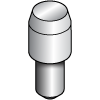

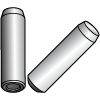



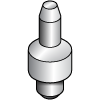



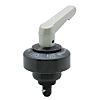



















How can we improve?
How can we improve?